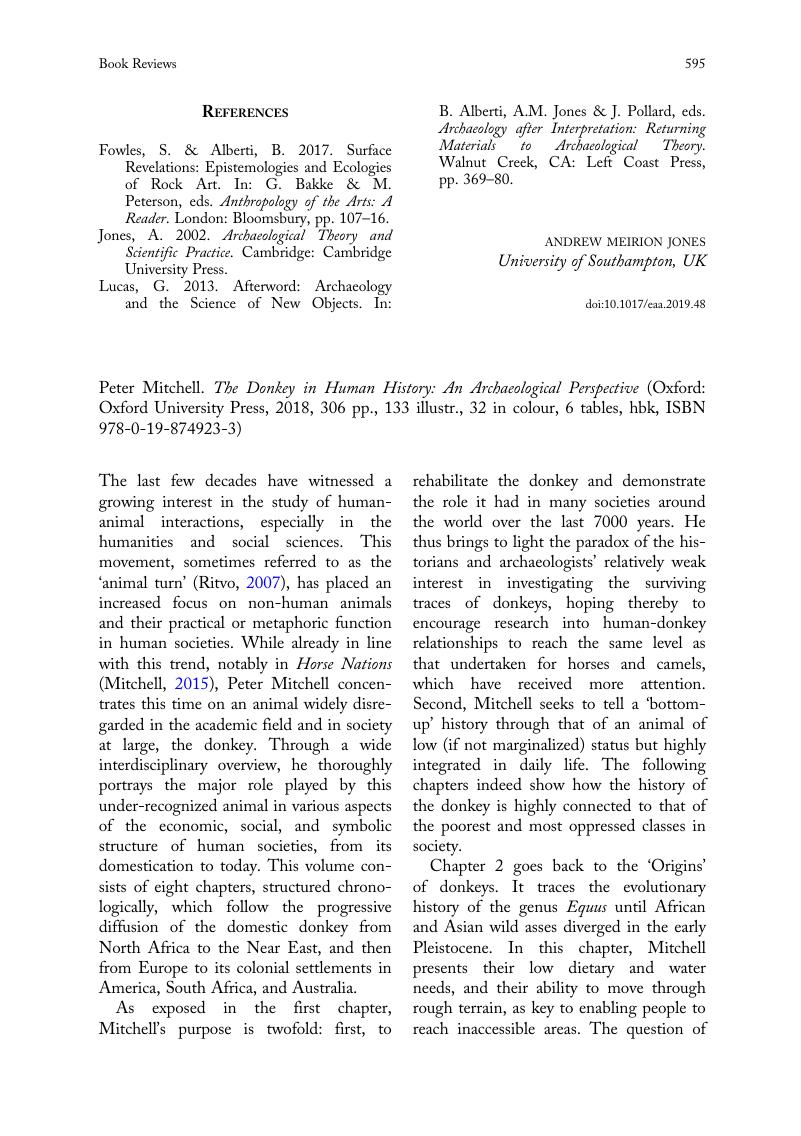No CrossRef data available.
Article contents
Peter Mitchell. The Donkey in Human History: An Archaeological Perspective (Oxford: Oxford University Press, 2018, 306 pp., 133 illustr., 32 in colour, 6 tables, hbk, ISBN 978-0-19-874923-3)
Review products
Peter Mitchell. The Donkey in Human History: An Archaeological Perspective (Oxford: Oxford University Press, 2018, 306 pp., 133 illustr., 32 in colour, 6 tables, hbk, ISBN 978-0-19-874923-3)
Published online by Cambridge University Press: 08 November 2019
Abstract
An abstract is not available for this content so a preview has been provided. Please use the Get access link above for information on how to access this content.

- Type
- Book Review
- Information
- Copyright
- Copyright © European Association of Archaeologists 2019
References
Mitchell, P. 2015. Horse Nations: The Worldwide Impact of the Horse on Indigenous Societies Post-1492. Oxford: Oxford University Press.Google Scholar
Mitchell, P. 2017. Why the Donkey Did Not Go South: Disease as a Constraint on the Spread of Equus asinus into Southern Africa. African Archaeological Review, 34: 21–41. https://doi.org/10.1007/s10437-017-9245-3Google Scholar
Ritvo, H. 2007. On the Animal Turn. Daedalus, 136: 118–22. doi: https://doi.org/10.1162/daed.2007.136.4.118Google Scholar


